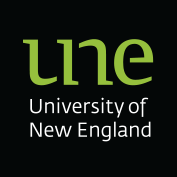Though only a few generations separate modern Samoans from their stone tool carrying ancestors, the knowledge of making the tools has been lost among many tradespeople today.
To help revive the cultural memory of Samoa’s rich stone tool heritage, Professor Mark Moore, of UNE Archaeology, along with some archaeology students, have been conducting a two-week workshop in Apia, Samoa, demonstrating traditional stone-flaking and 3D printing models of Samoan stone tools.

Reviving traditional stone flaking at a quarry in American Samoa.
Their work has focused on the to’i ma’a, or stone adze, made from basalt – perhaps the most important tool of the Samoans, used to fashion a range of functional and aesthetic woodcraft, ocean-voyaging canoes, and the iconic architecture of the islands.
As well as conducting workshops at the Tiapapata Art Centre, the team has endured an arduous climb through jungle, and up a steep ridge to reach one of the most significant stone tool manufacturing sites in the Pacific, the Tataga Matau basalt quarry.
At the Tataga Matau quarry, stone tools were made in large numbers and traded with island communities throughout the southwest Pacific. Hundreds of ‘foaga’, or grinding stones, can be found there, testifying to the industrial scale of adze making.
It’s probably the first time in about 200 years Samoans were flaking stone at the site.
What a way to spend International Museum Day (18 May) and National Archaeology Week (19 – 25 May)!
The stone tools workshop is part of a project titled Rock~Paper~Scissors at Tiapapata Art Centre Inc. to research, document and produce a range of pre-European contact arts and crafts from Samoa.
The project has been designed by heritage artist Galumalemana Steve Percival and is supported under the ACP-EU Programme Enhancing capacity for the sustainability of the cultural and creative industries in the Pacific.



Recent Comments